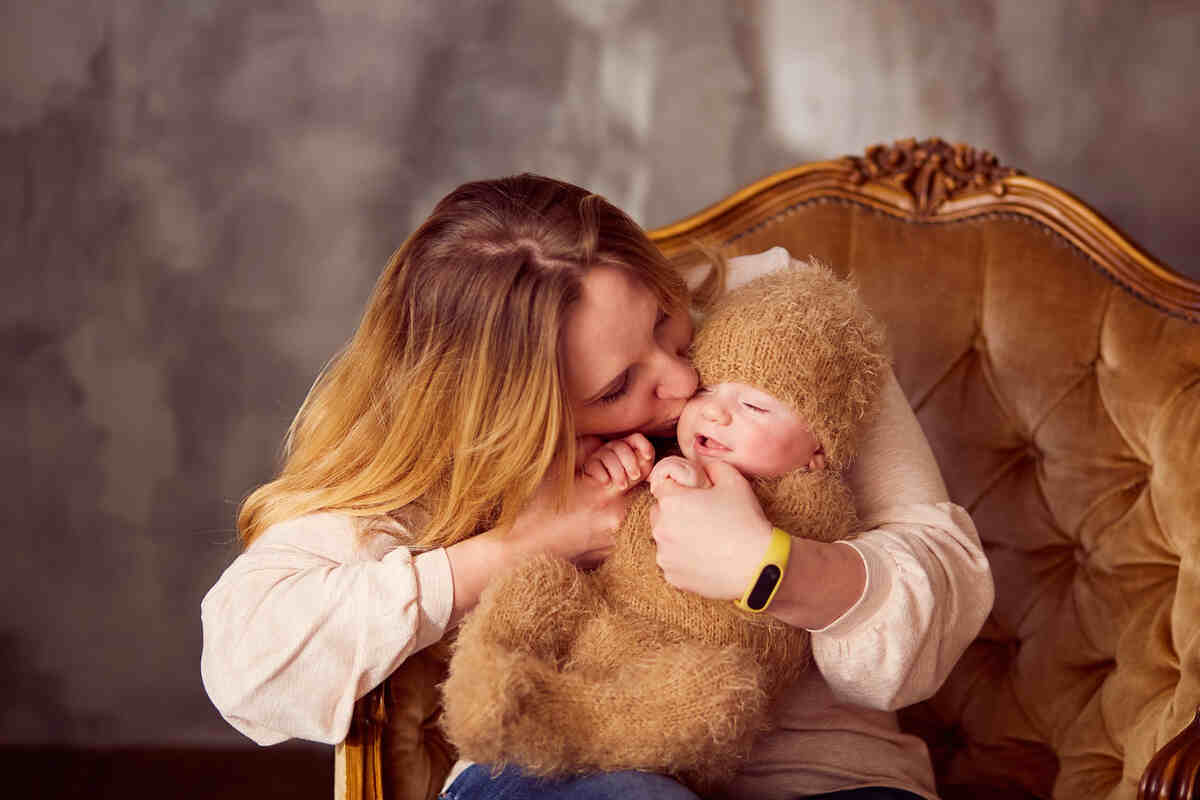Few moments in life rival the emotional depth and tenderness of a mother holding her baby. This simple act represents a universal love, care, and connection gesture. From emotional bonding to physical health benefits, the implications of this intimate experience are profound. In this blog, we explore why a mother holding baby is so impactful, delving into its emotional, physical, and psychological dimensions.
The Emotional Connection

The Power of Touch
The first embrace between a mother and her baby is a sensory-rich experience that releases oxytocin, the “love hormone.” This chemical reaction fosters feelings of warmth, security, and unconditional love. This touch represents the newborn’s first encounter with the outside world, providing comfort and reassurance in an unfamiliar environment.
Facilitating Attachment
Holding a baby is a nurturing act and a powerful catalyst for building attachment. These moments of closeness help create a foundation of trust and emotional security that supports healthy socio-emotional development. Babies learn to associate their mother’s touch with safety and love, allowing them to develop confidence as they grow.
Comfort and Reassurance
The simple act of being held helps babies feel safe and protected. It provides a stable environment for emotional growth, where trust and connection are nurtured. This comfort is especially vital during distress or unfamiliarity, reinforcing the unbreakable bond between mother and child.
The Physical Benefits
Temperature Regulation
A mother’s warmth helps regulate a newborn’s body temperature, especially in the early days. Skin-to-skin contact, often achieved during practices like kangaroo care, ensures that premature or low-weight infants maintain a stable temperature, promoting healthy growth.
Neurological Development
Physical contact with a caregiver stimulates a baby’s senses, aiding brain development. The baby’s exposure to their mother’s heartbeat, voice, and touch fosters neural connections critical for cognitive growth. Research suggests that these experiences can enhance memory, learning, and sensory integration in the long term.
Improved Sleep Patterns
Infants often experience better sleep when held. The security and warmth of a mother’s embrace regulate their sleep-wake cycles, creating a foundation for healthier sleep patterns. This, in turn, benefits both the baby and the mother, improving their overall well-being.
Benefits for the Mother
Maternal Confidence
Holding a baby reinforces a mother’s sense of capability and purpose. Successfully calming or soothing a child through touch builds confidence, helping mothers feel more attuned to their baby’s needs.
Stress Relief
Physical contact benefits mothers by reducing stress and anxiety levels. The release of oxytocin during these moments acts as a natural stress reliever, fostering a sense of calm and emotional stability.
Enhanced Bonding
The reciprocal interaction of touch and gaze strengthens the bond between mother and baby. These intimate moments create a shared understanding, nurturing a lifelong relationship of trust and love.
Practical Tips for Holding a Baby

1. Cradle Hold
This classic position involves supporting the baby’s head in the crook of your arm while your other arm supports the body. It provides both comfort and security for the newborn.
2. Kangaroo Care
Skin-to-skin contact is particularly beneficial for premature babies. Cover the baby against your bare chest with a soft blanket to maintain warmth.
3. Ergonomic Baby Carriers
For hands-free bonding, invest in a baby carrier that distributes weight evenly. This is especially useful for parents on the go while ensuring the baby remains close and secure.
5. Supportive Pillows
Supportive pillows can ease the strain on your arms and back, especially during prolonged holding sessions. These aids also enhance the baby’s comfort.
Balancing Bonding and Independence
While holding your baby fosters connection, encouraging gradual independence is equally essential for their development.
1. Encourage Tummy Time
Allow your baby to explore the world around them by incorporating tummy time into their daily routine. This activity supports motor skills and spatial awareness.
2. Safe Exploration
Create a secure environment where your baby can explore and play independently. Baby-proofing your home and providing age-appropriate toys are crucial steps.
3.Responsive Parenting
Pay attention to your baby’s cues and adjust your approach as they grow. Striking a balance between bonding and independence nurtures their autonomy while maintaining a close relationship.
Overcoming Challenges

1. Physical Strain
Extended holding sessions can be physically taxing for mothers. Ergonomic carriers and supportive pillows can alleviate discomfort, allowing for more enjoyable bonding experiences.
2. Balancing Responsibilities
Balancing caregiving with other responsibilities can be demanding. Integrate bonding moments into everyday tasks, such as feedings and diaper changes, to ensure your connection remains strong amidst daily demands.
The Timeless Importance of Holding Your Baby
A mother holding her baby is a timeless act of love that transcends generations and cultures. Beyond its emotional and physical benefits, this gesture lays the groundwork for a child’s lifelong sense of security and self-worth. For mothers, these moments remind them of their pivotal role in shaping their child’s future. Whether through a gentle cradle hold, skin-to-skin contact, or shared moments of quiet connection, holding your baby is a profound expression of care that fosters growth, resilience, and an enduring bond.
Conclusion
A mother holding her baby is a timeless symbol of love, connection, and caring mother. This simple act fosters emotional security, strengthens the bond, and supports a child’s development. It provides physical and psychological benefits for both mother and baby, nurturing growth and well-being. These cherished moments create lasting memories and a foundation of trust. Despite the challenges of parenthood, this bond serves as a reminder of unconditional love. Indeed, the power of a mother’s touch is immeasurable.











